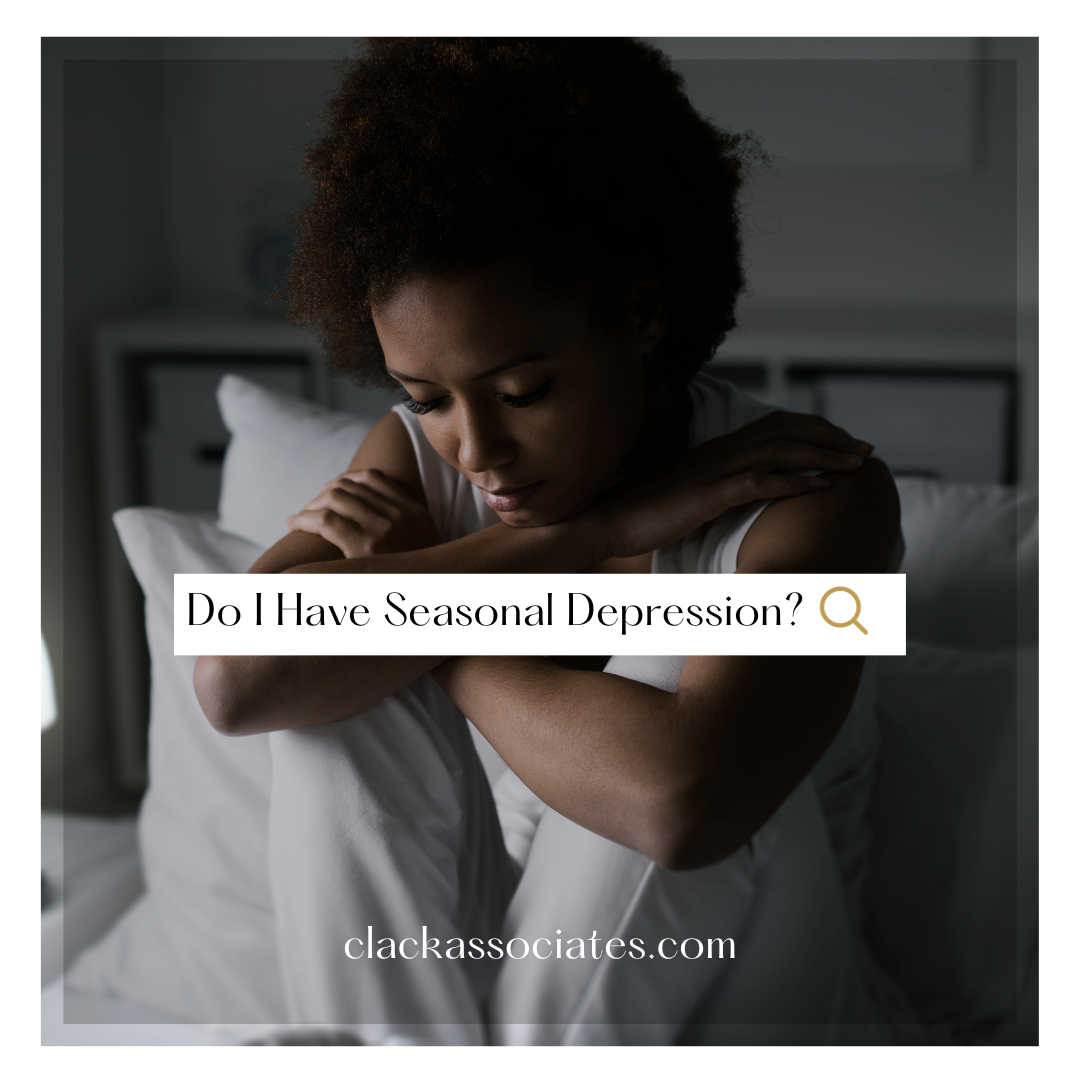Shedding Light on Seasonal Affective Disorder: A Guide for Mental Health

It’s that time of year that is all too familiar for many people who do not function as well as we lose daylight. Seasonal Affective Disorder (SAD) is a topic of great importance for the mental health community, especially for individuals who may already be dealing with various mental health challenges. In this blog, we will delve into the intricacies of SAD, exploring its symptoms, causes, and practical strategies for coping and self-care.
Seasonal Affective Disorder, also known as Seasonal Depression, is a type of depression that follows a seasonal pattern. It typically emerges during the fall and winter months when daylight hours are shorter, and the weather tends to be gloomier. While it affects people of all backgrounds, it’s essential to recognize that SAD can manifest differently in each person. This condition can have a significant impact on a person’s daily life, affecting their mood, energy levels, and overall well-being. The symptoms of seasonal depression can vary from person to person but often include:
- Persistent feelings of sadness or hopelessness
- Loss of interest in activities once enjoyed
- Changes in appetite or weight
- Difficulty sleeping or oversleeping
- Fatigue and low energy
- Irritability and difficulty concentrating
- Physical symptoms like headaches or body aches
The exact cause of seasonal depression is not fully understood, but several factors are believed to contribute to its development:
- Reduced Sunlight: The most widely accepted theory is that reduced exposure to natural sunlight during the fall and winter months can disrupt our circadian rhythms and lead to changes in mood-regulating chemicals in the brain, such as serotonin and melatonin.
- Biological Factors: Genetics may play a role, as some individuals may be more predisposed to seasonal depression due to their family history.
- Hormonal Changes: Changes in hormone levels, particularly in women, may also contribute to the onset of seasonal depression.
- Stress and Lifestyle Factors: People already dealing with stress who face unique challenges, may be more susceptible to seasonal depression. The stress of managing multiple responsibilities can exacerbate the symptoms.
It’s important to note that seasonal depression is a diagnosable mental health condition, and seeking professional help, such as psychotherapy, is crucial for proper assessment and treatment. Managing seasonal depression requires a holistic approach, and self-care plays a pivotal role.
Here are some strategies for managing seasonal depression, with a focus on self-care and mental health:
- Light Therapy: Light therapy, or phototherapy, involves exposure to bright, artificial light to mimic natural sunlight. It can be an effective treatment for seasonal depression by regulating circadian rhythms.
- Regular Exercise: Engaging in regular physical activity can boost mood and reduce symptoms of depression. Setting achievable weight and fitness goals can provide motivation.
- Nutrition: A well-balanced diet rich in fruits, vegetables, and whole grains can support overall mental health. Pay attention to your nutritional needs and consult a healthcare professional if necessary.
- Mindfulness and Relaxation: Practicing mindfulness meditation and relaxation techniques can help manage stress and improve mental well-being.
- Psychotherapy: Psychotherapy, such as cognitive-behavioral therapy (CBT), can be highly effective in addressing the emotional and cognitive aspects of seasonal depression.
- Social Support: Reach out to friends, family, or support groups for emotional support and connection, especially important for Black women dealing with additional stressors.
- Medication: In severe cases, medication prescribed by a healthcare provider may be necessary to manage symptoms.
Seasonal depression is a real and challenging condition that affects many individuals, who may already be dealing with multiple stressors. It’s essential to recognize the symptoms and seek professional help when needed. Self-care strategies, including light therapy, regular exercise, and psychotherapy, can significantly contribute to managing and mitigating the impact of seasonal depression. By prioritizing mental health and well-being, individuals can navigate through the winter blues and emerge into brighter seasons with a sense of resilience and hope.

